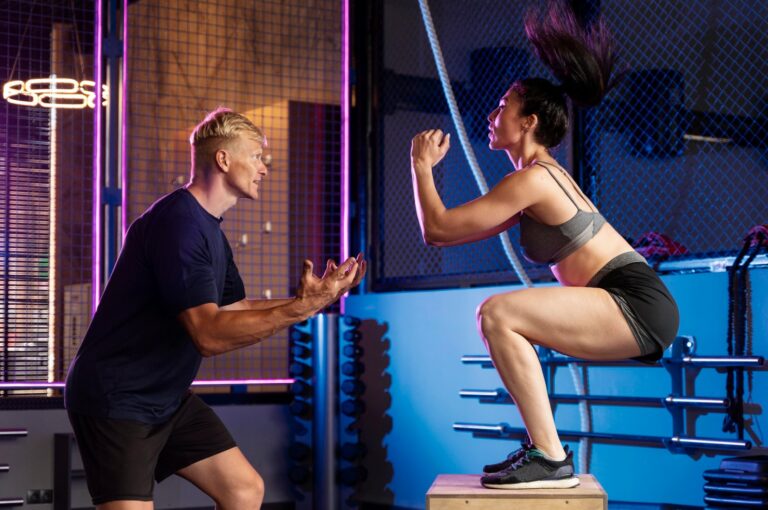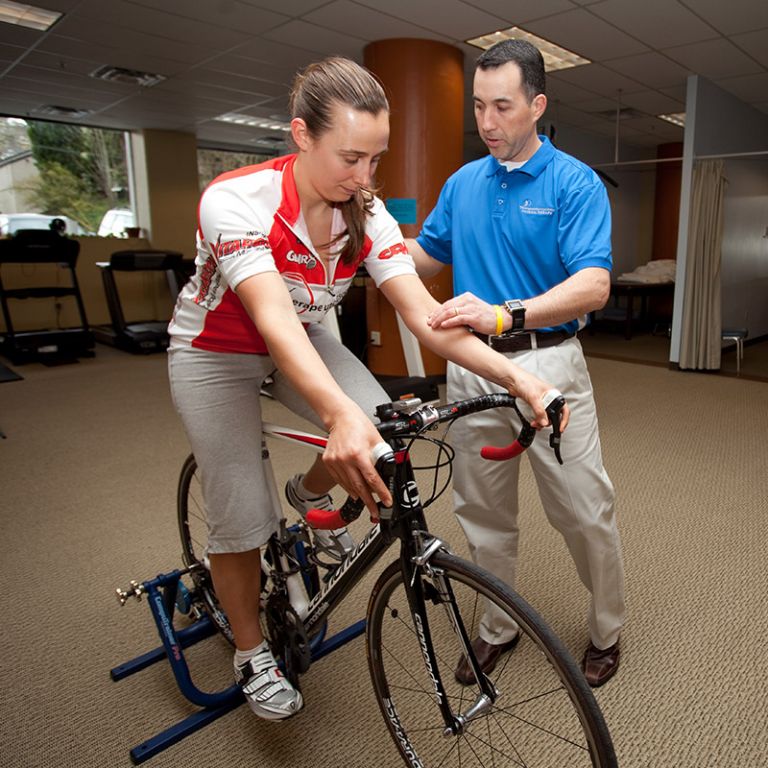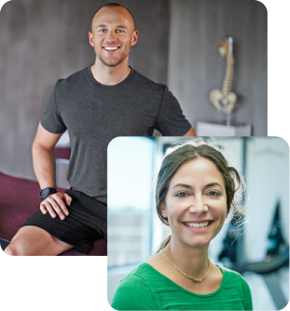As a beginner, diving into the world of cycling can be both exciting and daunting. It is essential, as with starting anything new, to ensure you not only have safe equipment, but that you also are physically prepared. Your strength, flexibility and fitness level all impact performance and overall experience or enjoyment of biking adventures.
Essential Cycling Gear for Beginners
The first and most crucial piece of equipment for any cyclist is, of course, the bike itself. The top consideration when selecting a bicycle is where and how you plan to ride. Whether you’re interested in road cycling, mountain biking, or leisurely cruising around town, there’s a bike out there for you. Consider factors such as frame size, suspension, and gearing options to find the perfect fit.
Physical therapists certified in Bike Fit can be an excellent resource for you to ensure your new hobby does not leave you in pain and questioning your decision to take up the sport! They can work with you to adjust your saddle and handlebars and offer guidance on feet position and pedaling techniques.
While not strictly necessary for beginners, cycling shoes and clipless pedals can greatly enhance your riding efficiency and power transfer. Cycling shoes with stiff soles provide better support and stability, while clipless pedals allow you to pedal more efficiently by attaching your feet to the pedals.
Every cyclist should prioritize safety, no matter their riding style or where they are pedaling. A properly fitted helmet can protect you from serious head injuries in the event of a fall or collision. Look for a helmet that not only feels good on your head, but one that meets safety standards and provides ample ventilation to keep you cool during long rides.

You have probably seen padded cycling shorts and wondered about the value they provide. While not necessary, they can make a world of difference in your comfort level on the bike. The padding helps reduce chafing and provides extra cushioning for your sit bones, especially on longer rides. Look for shorts made from moisture-wicking fabrics to keep you dry and comfortable in any weather.
Finally, staying hydrated is essential, especially on longer rides or in hot weather. Many riders wear hydration backpacks, which make it easy to sip water while on the move. Alternatively, if you don’t like the feel of wearing a pack while riding, consider investing in a durable, reusable water bottle and bottle cage to keep hydration within easy reach.
Beyond the Gear — Fitness for Cyclists
While having the right gear is important, it is equally crucial to focus on other aspects of cycling that can impact your performance and enjoyment of the sport. Not only will this enhance your experience, but it will also help you avoid injury.
Here are a few key areas to consider:
Strength training for cyclists
Cycling primarily targets the lower body muscles, but a well-rounded strength training routine can help improve overall performance and prevent injuries. To build a solid foundation, focus on exercises that target the core, legs, and upper body to build strength and stability on the bike.
By incorporating strength training that works the entire body, you can avoid muscle imbalances which when combined with repetitive motion such as during cycling, can lead to overuse injuries.
Strength training also improves endurance, so that you can tackle step ascents or power up long climbs on your bike. Biking requires significant power output over a prolonged period of time.

Flexibility and mobility for cyclists
Achieving peak cycling performance means you must also focus on flexibility and mobility. While cycling primarily requires cardiovascular fitness and leg strength, neglecting flexibility and mobility can lead to reduced performance and increased risk of injury.

Cycling involves a repetitive motion pattern that predominantly engages the lower body muscles, particularly the hip flexors, quadriceps, hamstrings, and calves. Over time, this can lead to muscle tightness and restricted range of motion, potentially impairing your cycling efficiency and predisposing you to overuse injuries.
Incorporating regular stretching exercises helps maintain and improve flexibility, allowing for a large range of motion in the joints.
Enhanced flexibility enables smoother pedal strokes, reduces energy expenditure, and minimizes the risk of strains during intense rides.
Additionally, a flexible body allows for better biomechanical alignment, which translates to more efficient energy transfer and power output. Flexible muscles are less likely to impede the natural movement patterns required for optimal cycling performance, such as reaching full extension during pedal strokes or maintaining an aerodynamic riding position. By prioritizing flexibility, you’ll not only reduce the risk of injury but also unlock newfound speed, agility, and endurance on the road or trail.
Be sure you’re doing dynamic stretching before your rides and saving static stretching for your cool-down.

Rest and recovery for cyclists
Finally, don’t underestimate the importance of rest and recovery in your training regimen. Rest is when the magic happens. It’s during periods of rest that your body repairs and rebuilds muscle fibers damaged during intense workouts. Adequate rest allows for optimal recovery, facilitating muscle growth and adaptation to training stimuli. Without sufficient rest, the risk of overtraining increases, leading to decreased performance, increased susceptibility to injury, and even burnout.
Rest isn’t just about physical recovery—it’s also about mental rejuvenation. Cycling can be mentally taxing, requiring focus, discipline, and perseverance. Taking breaks allows you to recharge mentally, reducing stress levels and preventing burnout.
By embracing rest and recovery, you’re not only safeguarding your body against injury and fatigue but also optimizing your performance potential.
Remember that success isn’t just about the bike you ride — it is about how you prepare your body for the adventure ahead. From selecting the right gear to honing your physical fitness, there are several considerations to keep in mind.
Physical therapists certified in Bike Fit can be invaluable resources for beginners, ensuring your cycling experience is as comfortable and injury-free as possible. They can assess your bike setup, adjusting your saddle and handlebars to fit your body’s unique biomechanics. Additionally, they offer guidance on proper feet position and pedaling techniques, optimizing efficiency and minimizing strain. Whether you’re a novice or a seasoned rider, consulting with a physical therapist can enhance your cycling performance and enjoyment, setting you on the path to success.


Start your PT journey today.
As physical therapists, we know the importance of movement for overall health and well-being. From injury recovery to achieving optimal performance, our passion is to help every patient reach their goals and live an active, pain-free life.

